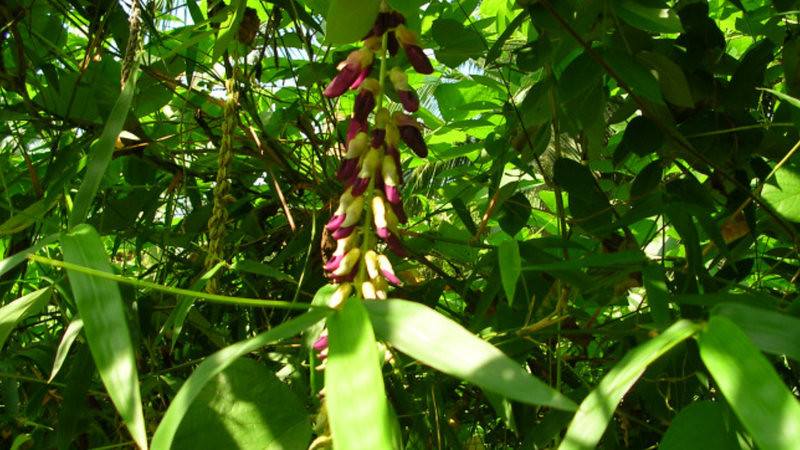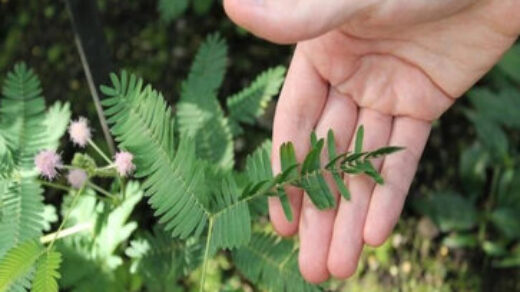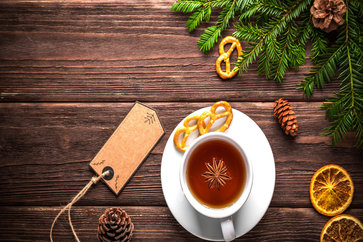How To Make Kaunch Beej Powder? Its Uses & Side Effects
Kaunch Beej, also known as Mucuna Pruriens in English, is a popular herb in Ayurveda and traditional medicine. It is derived from a tropical legume plant native to India, Africa, and other parts of the world. The seeds of Kaunch Beej are small, brown in color, and have various medicinal properties.
 It is well known for its wide range of strengthening, and tonifying effects with abundant beneficial properties. Whole Kaunch plants have medicinal properties and have been used widely in Ayurvedic and Unani medicine to treat nerve and sexual disorders and are also used as dietary supplements.
It is well known for its wide range of strengthening, and tonifying effects with abundant beneficial properties. Whole Kaunch plants have medicinal properties and have been used widely in Ayurvedic and Unani medicine to treat nerve and sexual disorders and are also used as dietary supplements.
This Indian herb is known by many names such as Khajrikuili (India) cowitch, cowhage, velvet beans (in the United States, Australia, and southern Africa), sea beans, buffalo beans, Kapikachu, Atmagupta, pica-pica (Venezuela), frijol terciopelo (in Latin America) and many more.
The Mucuna pruriens contain 40mg/g of a compound called Levodopa (L-dopa) a precursor to the neurotransmitter dopamine. The plant and its extracts have long been used in tribal communities as a toxin antagonist for various snakebites.
Research on its effects has shown its potential use as the preventive treatment of snakebites such as cobras, Saw-scaled vipers, Malayan Pit vipers, and Krait.
Ayurvedic view on Kaunch Pak
Ayurveda remedy “Kaunch Pak” is based on single herbs or used with a combination of one or more. The main herb widely used in it is Mucuna Prurita, commonly known as ‘Kaunch’.According to Ayurveda Kaunch Pak provides strength to females and makes them enable for pregnancy.
It acts as beneficial for a woman to maintain the menstrual cycle. It has been used since ancient times for many ailments such as Aphrodisiac activity, impotency, spermatorrhoea, sexual debility, enhanced libido, fertility, etc.
Properties According To Ayurveda
- Rasa: Madhura (sweet)
- Tikta (bitter)
- Guna: Guru (heavy)
- Snigdha (oily)
- Virya: Ushna (hot)
- Vipaka: Madhura (sweet)
- Doshakarma: Vata shamak (alleviates V Dosha)
How to Make Kaunch Beej Powder Pak? A Recipe
The ayurvedic preparation of “Kaunch Pak” is used since ancient times. For more than 1000 years so one cannot say or have the perfect (SOP) standard operating procedure it has changed a lot since that time.
Every region has its own recipe they changed according to the Availability of their regional herbs. So the preparation of “kaunch Pak” or “kaunch beej powder” may vary from one another.
I. Below is the recipe for how to make a kaunch beej powder pak
- First, take kaunch beej and soak in warm water for 12 hrs.
- Then remove the kaunch beej, rub it with the help of a cotton cloth, and keep the kaunch beej in the sunshine for drying.
- After drying the kaunch beej, make the powder of the kaunch beej and store it in an airtight container. Some may directly use kaunch beej powder.
- Now mix 1280gms of kaunch beej powder with 16 times cow’s milk and boil until reduced to 2/5 of the original.
- Now add the twice quantity of ghee in it and cook over medium heat.
- Take four times of sugar quantity and make syrup of it. Now add the sugar syrup to the initial mixture.
II. Now add all these below 2o ingredients (20 gm) it must be used in powder form.
- Vanshlochan (Bambusa arundinacea Wild)
- Safed Musli (Chlorophytum borivillianum)
- Tejpatra (Cinnamomum Tamala Nees & Ebrm)
- Dalchini (Cinnamomum zeylanicum Breyn)
- Safed Jira (Cuminum cyminum Linn)
- Elaichi (Elettaaria cardamomum Maton)
- Lavang (Eugenia caryophyllus Linn)
- Jivanti (Leptadenia reticulataWight & Arn)
- Nagkesar (Mesua ferrea Linn)
- Jatiphala (Myristica fragrans Houtt)
- Pippali (Piper longum Linn)
- Black pepper (Piper nigrum Linn)
- Karanja ki giri (Pongamia glabra Vent)
- Priyangu (Prunus mahalab Linn)
- Gajpipal (Scindapsus Officinalis Schott (Roxb)
- Bilva (Semicarpus AnacardiumLinn. )
- Ajowan (Tradyspermum ammi Sprague)
- Sunthi (Zingiber Officinale Roscae)
- Akarkara (Anacyclus pyrethrum Linn.)
- Samudhri shosha ( Argyreia speciosa (L.F.)
When the mixture is cooled add 640gms of honey and Kesar and Decorate with silver foil. Kaunch Pak must be consumed in an amount that does not influence hunger and appetite for food.
How to Make Mucuna Pruriens Powder?
To make Kaunch Beej powder, follow these steps:
1. Procure Kaunch Beej: Obtain high-quality Kaunch Beej seeds from a reliable source. Ensure that the seeds are clean and free from any impurities.
2. Roasting (Optional): Roasting the Kaunch Beej seeds can enhance their flavor and make them easier to grind. Heat a pan on low heat and add the seeds. Stir continuously for a few minutes until they turn slightly brown and emit a pleasant aroma. Be careful not to burn them.
3. Cooling: Allow the roasted seeds to cool completely before grinding. This step is crucial to prevent moisture build-up, which can affect the quality and shelf life of the powder.
4. Grinding: Transfer the cooled Kaunch Beej seeds to a grinder or blender. Grind them into a fine powder. You can also use a mortar and pestle for a traditional grinding method. Ensure that the powder is smooth and free from any lumps.
5. Sieving (Optional): If you prefer a finer texture, pass the powdered Kaunch Beej through a fine mesh sieve to remove any remaining coarse particles.
6. Storing: Transfer the Kaunch Beej powder to an airtight container or a glass jar with a tight lid. Store it in a cool, dry place away from direct sunlight. Proper storage helps retain the potency and freshness of the powder.
Note: It’s advisable to prepare the powder in small batches to maintain its efficacy. Also, remember to consult with a healthcare professional or an Ayurvedic practitioner for appropriate dosage and usage instructions before incorporating Kaunch Beej powder into your routine.
Kaunch Beej Health Benefits
Mucuna Pruriens is an annual twiner whose all parts such as kaunch beej (seed), leaves, roots, etc are of medicinal value it has been used for the following properties or conditions:
1. It benefits bodybuilding
kaunch beej can be a very advantageous supplement for bodybuilders as it is rich in the amino acid L-Dopa, which helps to lower cholesterol and blood sugar levels.
kaunch beej has been used as an anti-Parkinson’s disorder drug. A further benefit of Mucuna is that it can increase the production of HGH (Human Growth Hormone).
An increase in HGH levels can gain the body’s competency to build lean muscle and break down fat. Mucuna has also been shown to have diuretic effects. It increases tissue resiliency and improves coordination. Mucuna can also increase testosterone levels, which in turn can lead to increased muscle mass and strength.
2. It benefits Parkinson’s disease
The kaunch beej powder of Mucuna prurient possesses a long tradition in Ayurvedic Indian medicine for many ailments including (kampavat in Ayurveda) Parkinson.
The researchers have found that the Mucuna prurient is more effective than the levodopa in reducing dyskinesias. Various compounds’ of kaunch beej such as gallic acid, unsaturated acids, harming alkaloids, genistein, nicotine, bufotenin, lecithin, etc.
It has been isolated which possesses the neuroprotective activity and supports the anti-Parkinson’s Disease activity of levodopa. The seeds of kaunch beej have about 0.2% – 2% of L-dopa in their dry condition.
3. It benefits in Human Growth Hormone
kaunch beej contains 40mg/g of a compound named L-DOPA, which perhaps supports the body’s competency to stimulate the natural release of growth hormone.
The blood carries dopamine into the brain, where it spontaneously increases (HGH) production from the pituitary gland. The raised dopamine levels also optimize the production of other hormones, including testosterone, leading to increased sex drive and improved sexual function for both men and women, helping in stimulating muscle growth, as well as burning fat from fat cells.
4. It Increases Sperm Count
Research done at the University of Lucknow in India has come to the conclusion that the supplement improved the quantity and quality of men’s semen. They tested with 75 healthy men and 75 men who were unable to have children.
All the men were between 25 to 40 years. They were given 5 g a day of dried and ground Mucuna powder daily for three months. They have found that healthy men had little room for improvement with no side effects. But the men with a low sperm count (scientifically known as oligozoospermia) have shown effect more noticeable.
The analysis of the men’s blood showed a lot of improvement in the semen which is associated with an increase in to manufacture of the male sex hormone testosterone. The pituitary gland produces the messenger hormones FSH and LH, which prompt the testes to manufacture sperm and testosterone.
5. It has Aphrodisiac Effects
kaunch beej is capable of rectifying sexual behavior libido to accomplish it. In an aphrodisiac-al study done at the College of Pharmaceutical Sciences at Manipal on “Mucuna Pruriens,” a dose of 75 mg/kg body weight was given daily to male albino rats.
It was found that the sexual activity of male albino rats significantly increased testosterone levels. The research also discloses that sexual activity in animals had increased sexual desire and enhanced performance after 21 to 28 days. However, impotent animals did not derive any benefits.
Further study reveals that Mucuna Pruriens not only improved arousal and improved sexual activity to a pleasant extent but also maintain it for a longer time as indicated by the increase in below Ejaculation Latency and decrease in Post Ejaculatory Interval.
kaunch beej is shown to control central depressant activity and delay in ejaculation that could be due to hypersensitivity of genitals. This study showed that Mucuna Pruriens can be used to improve libido and hinder premature ejaculation.
Kaunch Beej Powder Side Effects
Women during pregnancy must completely avoid the consumption of Mucuna Pruriens as it has a uterine stimulant effect that may cause birth defects.
It has L-dopa that reacts to lower the blood sugar level-so people with diabetes or hypoglycemia must only use Kauch under the supervision of healthcare experts.
It has androgenic activity, increasing testosterone levels so persons with excessive androgen syndromes should avoid using Kaunch.
kaunch beej contains high quantities of L-dopa that are used for Parkinson’s disease, people with Parkinson’s should only use it under the supervision of health care experts.
Dose: There is no specifically determined herbal dosage for aphrodisiacs, but the expert agrees on 15-30 grams a day for adults as a safe and effective amount.
Note: As the dose may vary from person to person ‘Mucuna Pruriens” must only use under the supervision of qualified doctors.
Frequently Asked Questions (FAQs)
1. What is Kaunch Beej?
Kaunch Beej, scientifically known as Mucuna Pruriens, is a herb derived from a tropical legume plant. Its seeds are commonly used in traditional medicine due to their medicinal properties.
2. What are the health benefits of Kaunch Beej?
Kaunch Beej has been associated with various health benefits. It is believed to support brain health, improve sexual function and libido, manage stress, promote a positive mood, and potentially have neuroprotective effects.
3. How does Kaunch Beej improve sexual health?
Kaunch Beej is thought to increase testosterone levels, enhance fertility, and improve sperm quality. It contains L-DOPA, a precursor to dopamine, which plays a role in sexual function.
4. Can Kaunch Beej help with stress management?
Yes, Kaunch Beej is considered to have adaptogenic properties, which means it helps the body cope with stress. It may support a healthy stress response and help reduce cortisol levels.
5. Are there any potential side effects of Kaunch Beej?
While Kaunch Beej is generally safe for most people when used in moderate amounts, some individuals may experience side effects such as digestive issues or allergic reactions. It’s advisable to consult a healthcare professional before using it.
6. How should Kaunch Beej be consumed?
Kaunch Beej is available in various forms, including capsules, powders, and extracts. The recommended dosage may vary depending on the product and individual needs. It’s best to follow the instructions on the product label or consult a healthcare practitioner for guidance.
7. Can Kaunch Beej interact with medications?
Yes, Kaunch Beej may interact with certain medications, especially those affecting dopamine levels or blood pressure. It’s important to consult a healthcare professional if you are taking any medications before incorporating Kaunch Beej into your routine.
8. Is Kaunch Beej safe for everyone?
While Kaunch Beej is generally safe, it may not be suitable for everyone, especially pregnant or breastfeeding women, individuals with certain medical conditions, or those taking specific medications. It’s advisable to consult a healthcare professional before using it.
9. Where can I purchase Kaunch Beej?
Kaunch Beej supplements are available in health food stores, online retailers, and some pharmacies. Ensure to choose a reputable brand and source.
10. Can Kaunch Beej cure diseases?
Kaunch Beej is not a cure for diseases. It is a natural supplement that may provide certain health benefits. It’s important to rely on medical advice and treatment for specific health conditions.
Remember, it’s always recommended to consult a healthcare professional or Ayurvedic practitioner before starting any new supplement or herbal regimen.



























Can you please comment on the frequency of usage, or any cycling requirements? A number of people in alternative health circles have cautioned against using Mucuna Pruriens for more than a few days at a time, because the increased dopamine may down regulate the dopamine receptors (i.e., the increases in dopamine lead to the dopamine receptors becoming less sensitive). Ultimately, this would lead to the Mucuna Pruriens having a reduced effect / requiring increased doses / having a somewhat negative reaction (low dopamine) when coming off of it.
However, these comments seem to be more theoretical than practically proven. For example, I’ve also read that Mucuna Pruriens does not have the same negatives associated with L-DOPA, despite the fact that it contains it.
Can you fill me in on traditional ayurvedic use of this herb – if it can be used for extended periods of time (weeks, months, etc.), if it should be cycled (i.e., 1 week on, 1 week off, etc.), etc.?
Thank you so much!
Hi
Today I have bought launch about 250 grams but I shall use it from tomorrow after grinding. Inshallah it will benefited for me my age is 53 and I have problems of libido,trembling of right hand, I am sure Allah will cure my problems.
Thank you for your information and serving of humanity.
I am 47 years old suffering from ere tile dysfunction and loss of libido. Pls suggest permanent cure